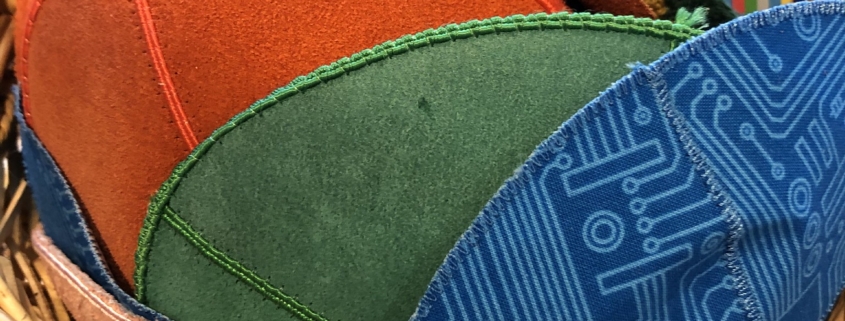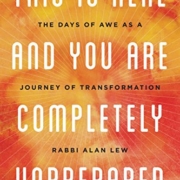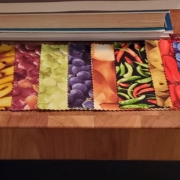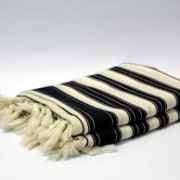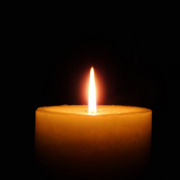Covering My Head
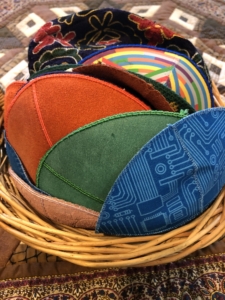
How could one little doily mean so much?
Growing up what we might now call Conservadox, it was pretty clear. Boys and men wore kippot; married (and widowed and divorced) women wore doilies, or lacy scarves, or something of that sort in synagogue, and any old scarf when lighting candles at home. If you went to a funeral, there would be a basket of black: yarmulkes and doilies with bobby pins. It was a nod to modesty for married women to cover their heads at worship; the men and boys were covering to acknowledge God above.
Of course, our more Orthodox neighbors might wear a tichel or a sheitel, but again, as an observance of women’s modesty.
For me, and I’d wager for many women these days, modesty is complicated. I cover up pretty much when I’m on the bimah, but I swim with the congregation, most recently in the river Jordan and the Dead Sea. Our congregation is on an island, so swimming comes up more than you might guess. My marital status is not really your business. I sometimes wear a tallit when I am leading from the bimah, and certainly when called to the Torah. So I’ve adjusted to wearing what was always a male garment for me–although I have some fancy cotton eyelet floating around my sewing room, waiting to become a very lightweight, feminine tallit–but somehow, the kippah just has not sat well on my keppie. It just feels too gendered to me. I’m very busy embracing everyone’s gender expression, but how about my own? The kippah…it just feels like cosplay to me. It feels like drag.
So there is my dilemma. If a man’s kippah is an expression of humility before God and a woman’s doily is an expression of married modesty, where does that leave me? I want to cover my head in God’s sight. And I also wish to shed some of the baggage of modesty, where men’s feelings are somehow managed by women’s behaviors. Is there something here for me?
Hang on. When Grandma lit the shabbos candles, she wore a scarf. Probably a big triangular scarf, thrown on quickly and tied under her chin. She might also wear it if it was drizzling, or windy, to protect her hairdo. So she was not wearing it for marital modesty, but to cover her head in front of God when lighting the candles. And it was a garment that was part of her general wardrobe. Ok that maybe feels authentic to me.
So, I’m playing. I’m playing with tiny scarves and bigger ones, tied bandana-style, halfway back on my head. I ordered a cotton batik Bucharian-style kippah, which somehow does not feel as male-coded to me. If I like it, I might try sewing my own. I’m knitting a pillbox hat, to channel my inner Jackie Kennedy. I could try a baseball cap, or a beanie, or who knows? The sky’s the limit.
Egalitarianism should not mean women pick up all men’s practices and abandon all women’s practices. That’s not really the point. That’s just saying boys are best. That’s what I’m trying to escape! But so much of modern practice is just that exactly. The women’s practices have largely been lost, although some are working to bring those back. For example look at Annabel Gottfried Cohen’s work, at pullingatthreads.com. She is researching (and reviving) the practices of Ashkenazi shtetl women. I’m not sure who is bringing us the practices of Mizrachi or Sfardi women, or Bagdhadi or Ethiopian women. So often the womens’ practices were oral only and thus harder to document.
If we revive practices such as winding candle wicks around the cemetery perimeter, will men join in our candle making? How do we reach true egalitarianism, embracing the known, male-coded rituals and practices, and adding back the women’s practices? These practices are rich with meaning, but so often denigrated as witchcraft or superstition rather than the Judaism of those who were not taught to read much, and who had to fit their devotions into home life rather than the study hall. How do I honor those women and include them in modern synagogue life? One thing I do is read an excerpt from tkhines (women’s prayer books) at Kabbalat Shabbat services before Rosh Chodesh if it’s my turn to lead. It’s a small addition but easy enough to do by looking up tkhines at opensiddur.org. It’s a start.
For the women who are wearing “saucer” kippot without a second thought, I am so glad you do not have a huge gender hangover to unpack from your childhood. I am still struggling with so many of the exclusionary practices I grew up with. Will I ever lay tefillin, or will that remain a practice that feels too “boy’s club” for me?
In the meantime, how many scarves can I buy or sew before I need an intervention?

Shari Salzhauer Berkowitz, creator with Steve Silbert of the contemplative spiritual-creative volume Color the Omer and a regular contributor to Builders Blog, is a professor of Communication Disorders and a speech-language pathologist. She serves as a lay service leader and Vice President of Temple Beth El of City Island, NY, also known as “your shul by the sea.”

